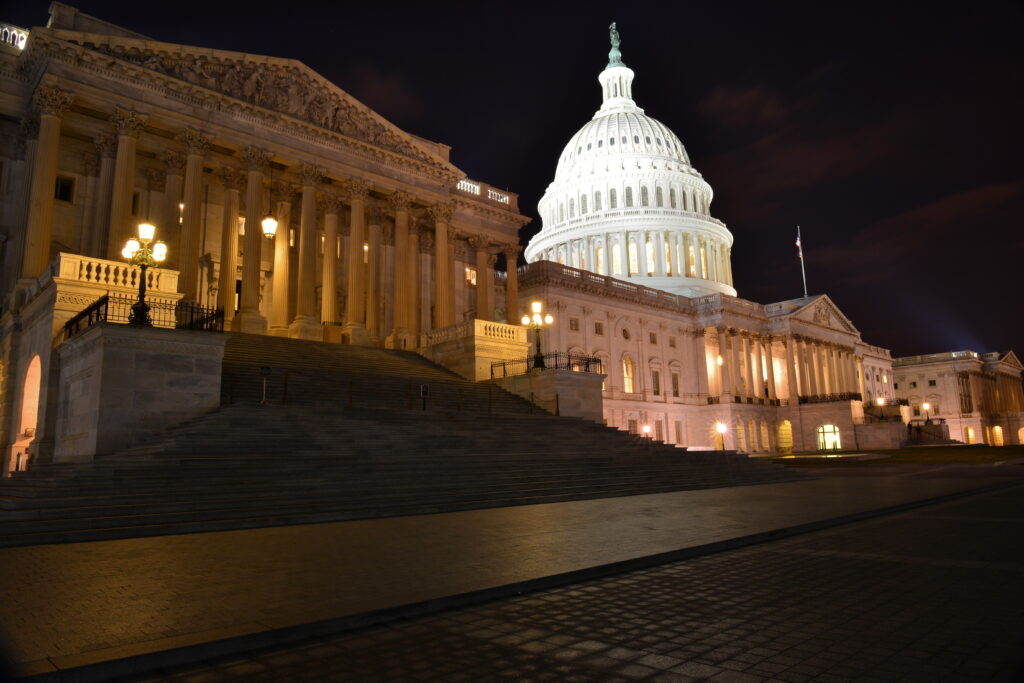
Goodbye Shutdown, Hello Funding
Well, it’s what we’ve all been waiting for… In a late-night move last Wednesday, Nov. 12, President Trump signed the Continuing Appropriations Act (CAA) of

Last week, President Trump unveiled his administration’s Artificial Intelligence (AI) Action Plan for America, a sweeping, 90‑point policy initiative aimed at securing U.S. dominance in AI through deregulation efforts, infrastructure investment, and global export strategy.
At the same time, the president also signed three executive orders to support the Action Plan and promote U.S. leadership in AI. These include:
As the use of AI continues to grow rapidly and its integration into the various sectors of the healthcare industry expands, let’s briefly review some initial thoughts around the AI Action Plan’s healthcare implications, which stem from the three pillars the Plan is built upon. These are:
Interestingly, the Action Plan directs agencies like the Food and Drug Administration (FDA) to establish regulatory “sandboxes” or “AI Centers of Excellence.” These frameworks are designed to fast-track testing and deployment of AI tools in healthcare, enabling safer and quicker uptake in areas such as diagnostics, predictive analytics, and drug development.
The Plan also suggests thatbuilding a massive, modernized AI infrastructure should deliver the computing power needed for advanced healthcare AI. Initiatives like “Stargate,” a $500 billion venture launched by the president with several tech giants, are expected to add significant infrastructure capacity and job growth, with potential applications in early cancer detection and therapeutic development.
Elsewhere, the Action Plan references workforce retraining to support AI adoption. Health systems and other provider groups dealing with staffing shortages may benefit from AI-assisted workflows – but, as some analysts have argued, only if clinicians are equipped, and governance structures are in place to oversee AI-driven decisions. In this way, the Action Plan presents new opportunities to align value-based care designs with the use of AI for things like improving operational efficiencies.
Now, some observers warn that while the plan lays an ambitious foundation, it is vague on critical areas such as resolving intellectual property and copyright issues in training AI data models.
And although the Action Plan promotes rapid AI adoption and infrastructure opportunities, critics warn that deregulation may weaken safeguards under the Health Insurance Portability and Accountability Act (HIPAA) and reduce oversight of things like bias and transparency in AI systems, which could compromise public trust in such systems when deployed in patient care.
One particular health AI innovator further cautions that these systems must be internally governed with strong ethical frameworks, especially in patient‑facing applications.
President Trump’s AI Action Plan marks a major pivot toward furthering his deregulatory agenda and advancing American leadership internationally in AI. In healthcare, it offers a potential leap forward in a variety of areas. Yet the plan leaves open critical questions on ethics, data-privacy, and sustainability.
As the healthcare industry evaluates AI adoption, both providers and regulators will, now more than ever, have to balance the promise of technological transformation with rigorous governance and strong patient protections. Stay tuned, because these are still only the beginning stages of refining government regulation in healthcare AI.
Reference material


Well, it’s what we’ve all been waiting for… In a late-night move last Wednesday, Nov. 12, President Trump signed the Continuing Appropriations Act (CAA) of

Here are my thoughts on what to expect when the federal shutdown finally ends. First, the lights don’t all flick back on at once. Agencies
Please log in to your account to comment on this article.

Accurately determining the principal diagnosis is critical for compliant billing, appropriate reimbursement, and valid quality reporting — yet it remains one of the most subjective and error-prone areas in inpatient coding. In this expert-led session, Cheryl Ericson, RN, MS, CCDS, CDIP, demystifies the complexities of principal diagnosis assignment, bridging the gap between coding rules and clinical reality. Learn how to strengthen your organization’s coding accuracy, reduce denials, and ensure your documentation supports true medical necessity.

Denials continue to delay reimbursement, increase administrative burden, and threaten financial stability across healthcare organizations. This essential webcast tackles the root causes—rising payer scrutiny, fragmented workflows, inconsistent documentation, and underused analytics—and offers proven, data-driven strategies to prevent and overturn denials. Attendees will gain practical tools to strengthen documentation and coding accuracy, engage clinicians effectively, and leverage predictive analytics and AI to identify risks before they impact revenue. Through real-world case examples and actionable guidance, this session empowers coding, CDI, and revenue cycle professionals to shift from reactive appeals to proactive denial prevention and revenue protection.

Sepsis remains one of the most frequently denied and contested diagnoses, creating costly revenue loss and compliance risks. In this webcast, Angela Comfort, DBA, MBA, RHIA, CDIP, CCS, CCS-P, provides practical, real-world strategies to align documentation with coding guidelines, reconcile Sepsis-2 and Sepsis-3 definitions, and apply compliant queries. You’ll learn how to identify and address documentation gaps, strengthen provider engagement, and defend diagnoses against payer scrutiny—equipping you to protect reimbursement, improve SOI/ROM capture, and reduce audit vulnerability in this high-risk area.

Only ICD10monitor delivers what you need: updates on must-know changes associated with the FY26 IPPS, including new ICD-10-CM/PCS codes, CCs/MCCs, and MS-DRGs, plus insights, analysis and answers to your questions from two of the country’s most respected subject matter experts.

Get clear, practical answers to Medicare’s most confusing regulations. Join Dr. Ronald Hirsch as he breaks down real-world compliance challenges and shares guidance your team can apply right away.

Federal auditors are zeroing in on Inpatient Rehabilitation Facility (IRF) and hospital rehab unit services, with OIG and CERT audits leading to millions in penalties—often due to documentation and administrative errors, not quality of care. Join compliance expert Michael Calahan, PA, MBA, to learn the five clinical “pillars” of IRF-PPS admissions, key documentation requirements, and real-life case lessons to help protect your revenue.

During this essential RACmonitor webcast Michael Calahan, PA, MBA Certified Compliance Officer, will clarify the rules, dispel common misconceptions, and equip you with practical strategies to code, document, and bill high-risk split/shared, incident-to & critical care E/M services with confidence. Don’t let audit risks or revenue losses catch your organization off guard — learn exactly what federal auditors are looking for and how to ensure your documentation and reporting stand up to scrutiny.

Learn how to navigate the proposed elimination of the Inpatient-Only list. Gain strategies to assess admission status, avoid denials, protect compliance, and address impacts across Medicare and non-Medicare payors. Essential insights for hospitals.
Happy National Doctor’s Day! Learn how to get a complimentary webcast on ‘Decoding Social Admissions’ as a token of our heartfelt appreciation! Click here to learn more →
CYBER WEEK IS HERE! Don’t miss your chance to get 20% off now until Dec. 2 with code CYBER24